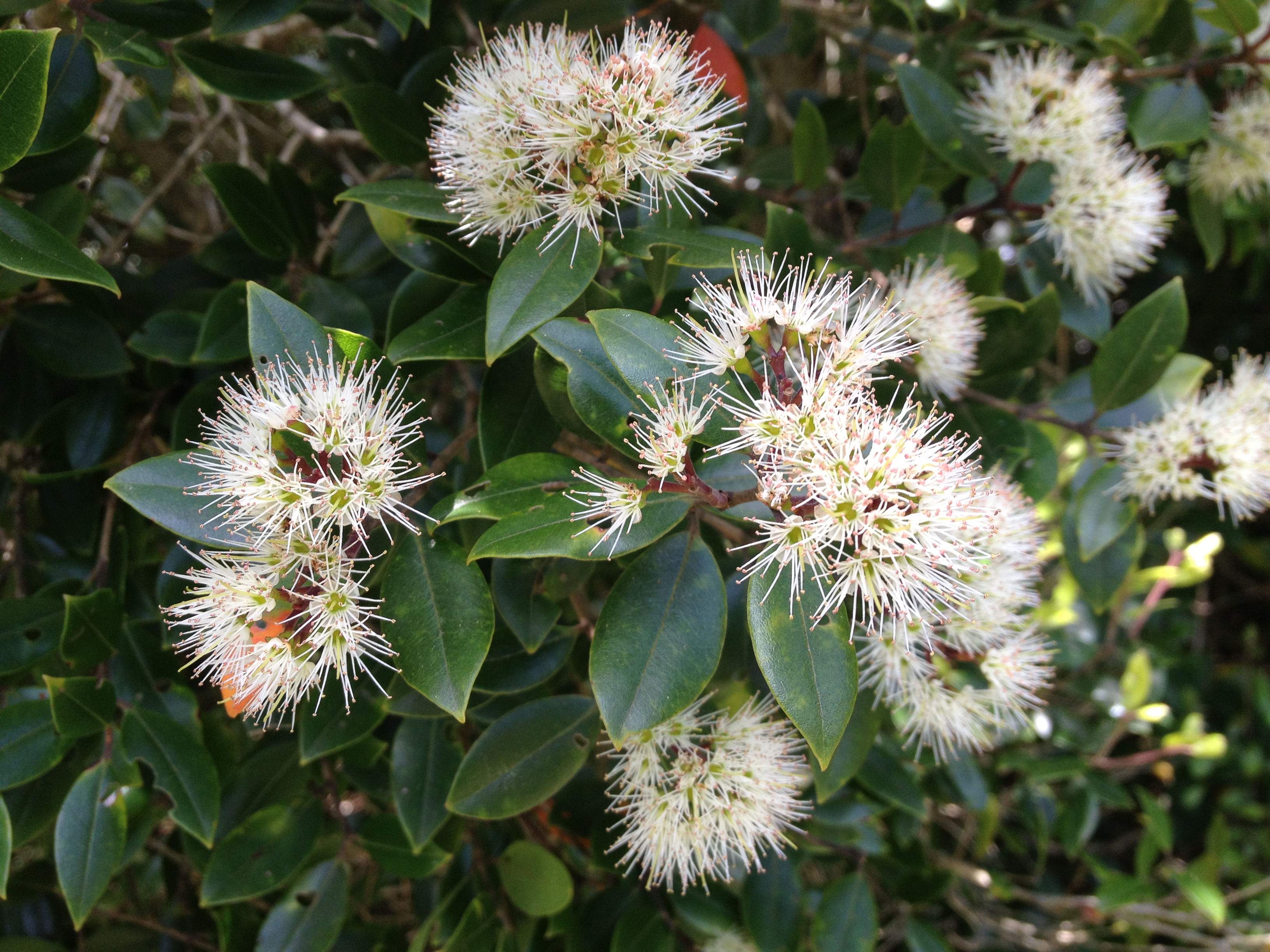Bartlett's rata
(Metrosideros bartlettii)

Description
Metrosideros bartlettii, also known as Bartlett's rātā, Cape Reinga white rātā or in Māori as Rātā Moehau, is one of twelve Metrosideros species endemic to New Zealand and is notable for its extreme rarity and its white flowers, somewhat uncommon in that genus of red-flowered trees and plants. Its natural range is in the far north of the North Island at Te Paki, in three patches of dense native forest near Spirits Bay (34° S) that escaped destruction by fire, namely Radar Bush, Kohuronaki Bush, and Unuwhao Bush. Only 25 adult trees are known to exist in the wild (down from 34 in 1992) and most of these are either ill or dying. The lack of fossil evidence elsewhere suggests that the tree may always have been restricted to the North Cape area, which was an island until it was connected to the mainland by the sandspit that constitutes Ninety Mile Beach. Metrosideros /-m-tr--s-d-r-s, -tro--/ is a genus of approximately 60 trees, shrubs, and vines mostly found in the Pacific region in the Myrtaceae family. Most of the tree forms are small, but some are exceptionally large, the New Zealand species in particular. The name derives from the Ancient Greek metra or "heartwood" and sideron or "iron". Perhaps the best-known species are the p-hutukawa (M. excelsa), northern r-t- (M. robusta), and southern r-t- (M. umbellata) of New Zealand, and --hi-a lehua, (M. polymorpha), from the Hawaiian Islands.
Taxonomic tree:







